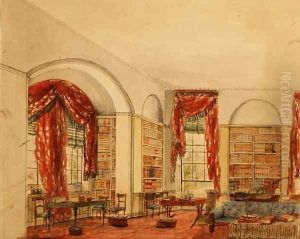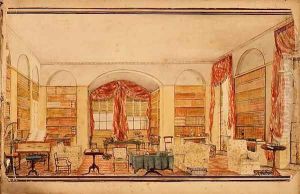Julia Cartwright Paintings
Julia Cartwright, born Julia Mary Cartwright Ady in 1851, was an esteemed British art historian, critic, and author who made significant contributions to the study of Italian Renaissance art. Her work, particularly on artists such as Sandro Botticelli, Benozzo Gozzoli, and the city of Siena, has been pivotal in the field. Cartwright's scholarly career was notable not only for its academic impact but also for its timing; she emerged as a leading figure in art history at a time when opportunities for women in academia were limited.
Cartwright was educated at home, a common practice for women of her social standing during the Victorian era. Despite the lack of formal university education available to women at the time, she cultivated a deep knowledge of European art history, languages, and literature with the help of private tutors. Her marriage to Henry Ady provided her with the means and opportunity to travel extensively in Italy, where she conducted much of her research.
Throughout her career, Julia Cartwright published extensively, including books, articles, and essays that explored the intricacies of Renaissance art and its cultural context. Her works, such as 'The Painters of Florence from the Thirteenth to the Sixteenth Century' and 'Beatrice d'Este, Duchess of Milan, 1475-1497: A Study of the Renaissance', were celebrated for their detailed research, engaging narrative style, and insightful analysis. Cartwright's ability to weave together the political, social, and personal lives of her subjects with their artistic achievements made her writings particularly compelling.
Despite the challenges faced by women in academia during her lifetime, Cartwright's contributions were recognized by her peers. She was awarded honorary degrees and memberships in several prestigious academic societies, rare honors for women at the time. Julia Cartwright passed away in 1924, leaving behind a legacy that has endured in the field of art history. Her pioneering work not only enriched understanding of the Renaissance but also paved the way for future generations of women in the arts and humanities.

